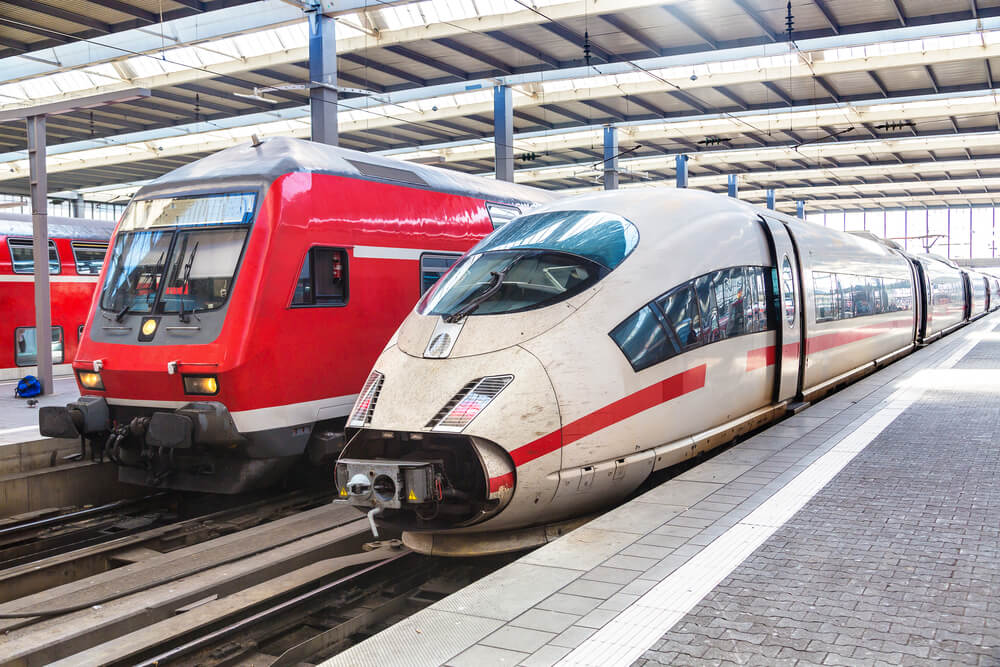Time is running out! Nominate now for the 3D Printing Industry Awards 2023.
Texas-based industrial 3D printer manufacturer Essentium, Inc. has announced that its High-Speed Extrusion (HSE) 3D printing platform and high-performance materials have been certified by Deutsche Bahn (DB), Germany’s national railway company.
This additive manufacturing technology will be used to 3D print train parts and tools. Essentium claims that its offerings will allow DB to increase the availability of its fleet by enabling key components to be replaced quickly and efficiently.
The Essentium HSE 3D printer is based in Neumünster and has been tested with the company’s flame-retardant Essentium 9085 and HTN-CF25 thermoplastics. These materials have demonstrated compliance with additive manufacturing standards ISO-ASTM 52920:2023 and ISO 52930.
“A lot of people still wonder if additive is ready for prime time. Deutsche Bahn, which is 3D printing tens of thousands of replacement parts for its trains, proves it is,” commented Essentium CEO Blake Teipel, Ph.D.
“We look forward to advancing Deutsche Bahn’s AM capabilities to speed repairs and keep its assets operational with minimal downtime. This partnership will pave the way for others in the rail and transport industries to follow.”

Deutsche Bahn certifies Essentium technology
DB will leverage Essentium’s 3D printing technology to overcome supply chain challenges and raw material shortages for obsolete parts. The HSE 3D printer and flame-retardant materials will be utilized in conjunction with DB’s digital warehouse that houses around 1,000 virtual technical drawings of spare parts. DB hopes to increase this number to 10,000 by 2030.
DB will employ Essentium’s materials and the Neumünster-based HSE 3D printer to produce low-run parts on-demand, rather than manufacturing parts in large quantities. This will allow the company to limit storage space, increase delivery speeds, and cut costs, Essentium claims.
Additionally, Essentium’s high-performance 3D printing materials are highlighted as meeting the challenging railway industry standards. Indeed, rolling stock applications are required to possess high levels of flame retardancy. Traditional thermoplastics generally possess poor mechanical properties and limited fire performance, making them unsuitable for rail applications.
Capable of withstanding 180℃, Essentium’s high-temperature thermoplastics are said to meet industry standards for reliability, repeatability, and performance, allowing DB to rapidly 3D print rail-worthy parts.

3D printing replacement railway parts
This is not the first time DB has turned to 3D printing to manufacture railway components. Back in 2019, the company integrated metal 3DMP 3D printing technology from GEFERTEC to improve the availability of hard-to-procure spare parts.
The 3DMP process enables rapid production of near-net-shaped metal blanks using wire as a raw material. This method offers a high build-up rate of up to 600 cm3 per hour, making it ideal for the cost-effective production of large steel, nickel-base, titanium or aluminum components. DB utilized this 3DPM technology to service vehicles for older locomotives, 3D printing now obsolete parts.
DB is not the only railway company to employ additive manufacturing technology. In 2021, it was announced that Kimya, the additive manufacturing materials arm of technology company ARMOR, was 3D printing spare railway parts with its custom PEKK filament.
The unnamed railway supplier required a protective cover component developed back in 1982, and turned to Kimya to 3D print a small batch of the polymer part through the Kimya Factory manufacturing service. Utilizing a PEKK filament developed at Kimya’s R&D center, Kimya Lab, the team was able to 3D print the protective covers with reduced lead times and cost savings.
“Designing a traditional mold would have required a longer development time and generated costs that could only be covered by producing thousands of parts. The Kimya Factory offers our partners a fit-for-purpose finished product using our own materials, all in small runs,” commented Kimya’s Business Development Director Pierre-Antoine Pluvinage.
Elsewhere, France’s national railway company, the Société nationale des chemins de fer français (SNCF), uses the Agile PLM software from 3D printing software developer 3YOURMIND. SNCF adopted this software in 2021, using it to identify, evaluate, and store its additive manufacturing part data to cut costs and streamline on-demand spare part production.
Subscribe to the 3D Printing Industry newsletter to keep up to date with the latest 3D printing news. You can also follow us on Twitter, like our Facebook page, and subscribe to the 3D Printing Industry Youtube channel to access more exclusive content.
Are you interested in working in the additive manufacturing industry? Visit 3D Printing Jobs to view a selection of available roles and kickstart your career.
Featured image shows Deutsche Bahn trains. Photo via Deutsche Bahn.

